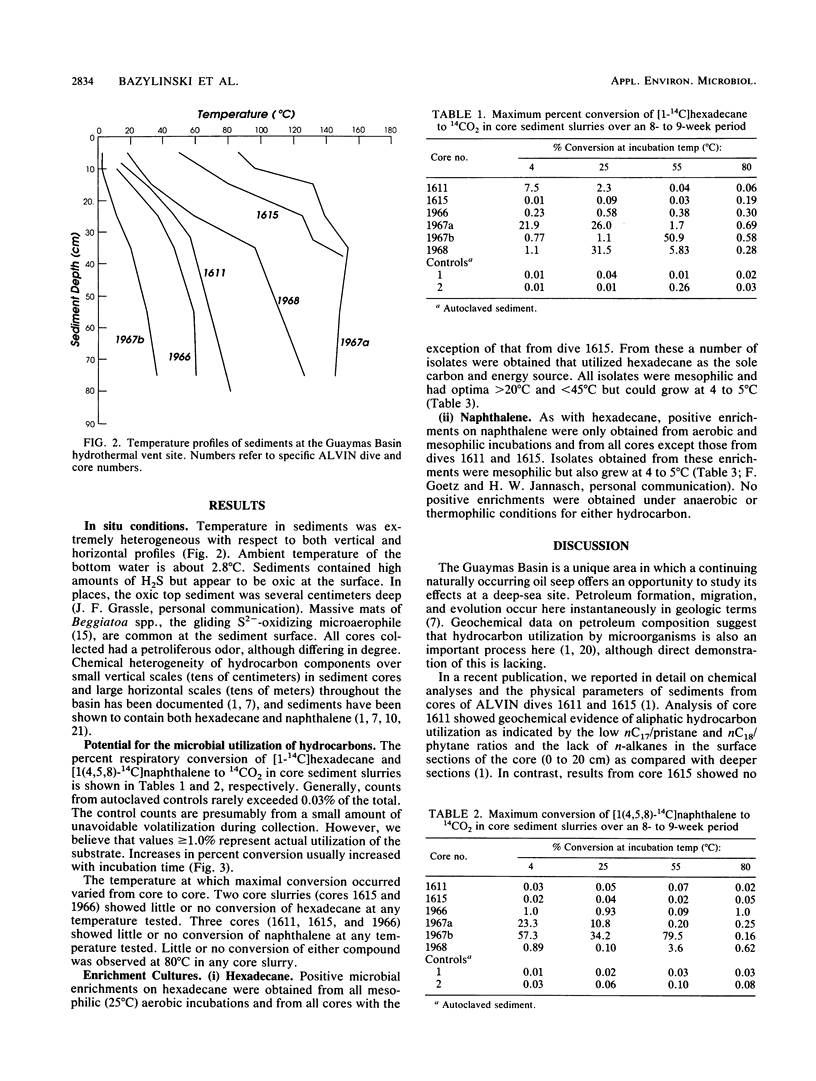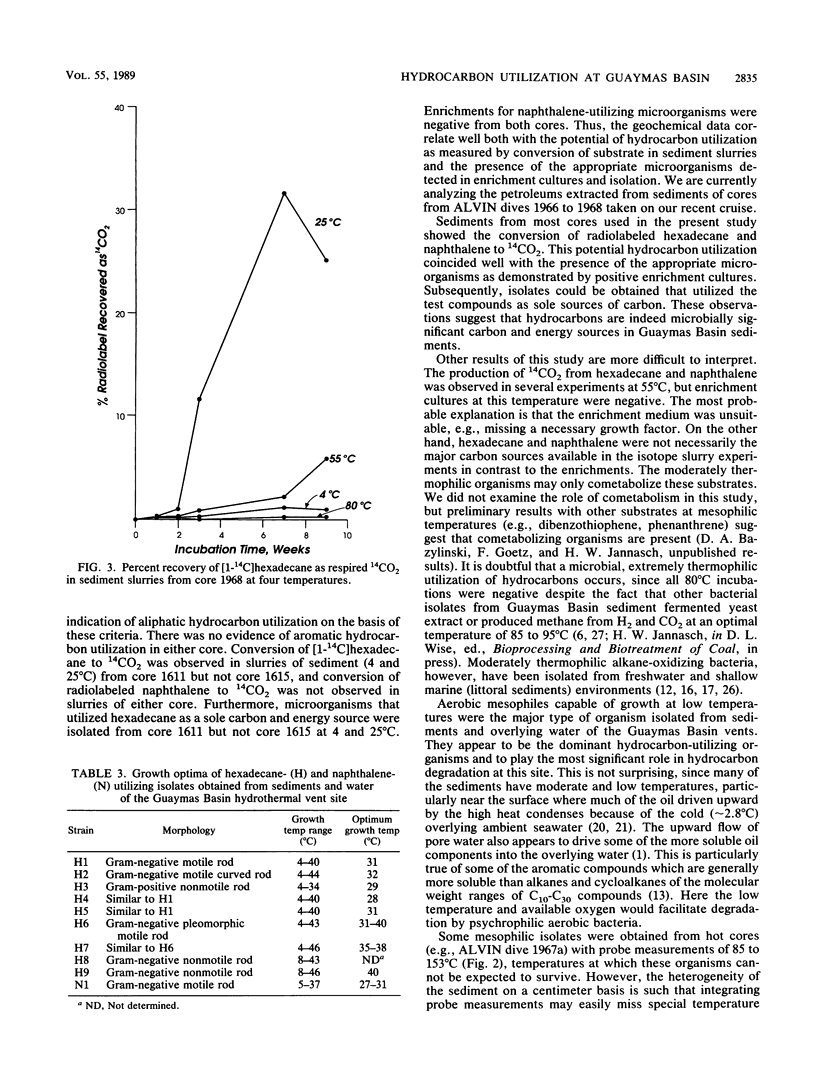Abstract
The Guaymas Basin (Gulf of California; depth, 2,000 m) is a site of hydrothermal activity in which petroliferous material is formed by thermal alteration of deposited planktonic and terrestrial organic matter. We investigated certain components of these naturally occurring hydrocarbons as potential carbon sources for a specific microflora at these deep-sea vent sites. Respiratory conversion of [1-14C]hexadecane and [1(4,5,8)-14C]naphthalene to 14CO2 was observed at 4°C and 25°C, and some was observed at 55°C, but none was observed at 80°C. Bacterial isolates were capable of growing on both substrates as the sole carbon source. All isolates were aerobic and mesophilic with respect to growth on hydrocarbons but also grew at low temperatures (4 to 5°C). These results correlate well with previous geochemical analyses, indicating microbial hydrocarbon degradation, and show that at least some of the thermally produced hydrocarbons at Guaymas Basin are significant carbon sources to vent microbiota.
Full text
PDF




Selected References
These references are in PubMed. This may not be the complete list of references from this article.
- Nelson D. C., Wirsen C. O., Jannasch H. W. Characterization of Large, Autotrophic Beggiatoa spp. Abundant at Hydrothermal Vents of the Guaymas Basin. Appl Environ Microbiol. 1989 Nov;55(11):2909–2917. doi: 10.1128/aem.55.11.2909-2917.1989. [DOI] [PMC free article] [PubMed] [Google Scholar]
- WOLIN E. A., WOLIN M. J., WOLFE R. S. FORMATION OF METHANE BY BACTERIAL EXTRACTS. J Biol Chem. 1963 Aug;238:2882–2886. [PubMed] [Google Scholar]
- Widdel F., Pfennig N. A new anaerobic, sporing, acetate-oxidizing, sulfate-reducing bacterium, Desulfotomaculum (emend.) acetoxidans. Arch Microbiol. 1977 Feb 4;112(1):119–122. doi: 10.1007/BF00446665. [DOI] [PubMed] [Google Scholar]


